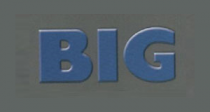New DIFI Working Group to Tackle Interoperability Challenges Threatening Flat-Panel Antennas’ Future
Rapid innovation in electronically-steerable technology has come at the price of interoperability
PISCATAWAY, N.J.,
Feb. 27, 2024 (GLOBE NEWSWIRE) -- The Digital Intermediate Frequency
Interoperability Consortium (DIFI) has established a new working group to
focus on a fast-emerging challenge to advancements in ground segment
technology.
Electronically-steered flat-panel antennas (ESAs) are on a clear evolutionary path from high-cost terminals for single-beam/single-use applications to increasingly affordable offerings, many with some combination of multi-beam, multi-band, and multi-orbit capabilities. Supporting these flexible antenna systems will drive demand for digital-based ground systems for signal routing and processing. The DIFI Consortium is taking up the challenge of setting up and managing services through these antennas in a way that will enable interoperability between antenna systems and digital ground systems.
“It’s the Wild West out there as far as flat-panel technology is concerned,” said DIFI Chairman Stuart Daughtridge. “That’s a reflection of the great pace of innovation that’s been taking place, but it will also become a barrier to adoption unless we can agree on an accepted way to manage signals using these antennas.”
New Working Group Accepts the Challenge of
Standardization
Todays ESAs use a variety of designs and
architectures that impact how they interface with the rest of the terminal
technology. The diversity of solutions demand an effort at standardization,
so that customers, tech providers and satellite network operators can be
confident about how they will manage and operate these incredibly capable
ESAs while ensuring interoperability with the rest of the terminal. Jeremy
Turpin of ALL.SPACE, a prominent innovator in ESAs, has agreed to chair a
new working group, ESA Specifications, to develop the standards. DIFI
invites others interested in supplying, integrating with or using
flat-panel antennas to take part and contribute to discussions leading to
standards that will support the broadest range of antenna designs and
applications.
“As a leading innovator in flat-panel antennas,” said ALL.SPACE Chief Scientist Jeremy Turpin, “our company is committed to ensuring interoperability with all the technology of the ground segment. We understand our customers operate in a multi-vendor world and look for the best technology to meet their specific needs. By developing and complying with standards, we give our industry the best chance to grow the market beyond anything we have seen before.”
About DIFI
The mission of the Digital
Intermediate Frequency Interoperability (DIFI) Consortium is to enable the
digital transformation of space, satellite, and related industries by
providing a simple, open, interoperable Digital IF/RF standard that
replaces the natural interoperability of analog IF signals and helps
prevent vendor lock-in. Today, ground segment relies on coaxial cable to
transport RF at intermediate frequencies, such as L-Band, between antennas
and modems and through multiple analog devices. Analog IF systems, with
their inflexible chain of hardware, are difficult to scale and complex to
operate. They are struggling to handle today’s capacity demands and
cannot scale up to meet the needs of tomorrow.
The industry needs an open and transparent standard, developed and adopted not by vendors alone but by users, operators and vendors working together. A standard that meets the broadest range of needs without becoming too complex and costly to implement. A standard that reduces the total cost of ownership and boosts network and terminal agility, performance and resilience, enabling ground segment to seamlessly adapt to rapidly changing space-layer payloads, orbits and constellations.
Contact:
Joni Sterlacci, Sr. Program
Manager, j.sterlacci@ieee.org






